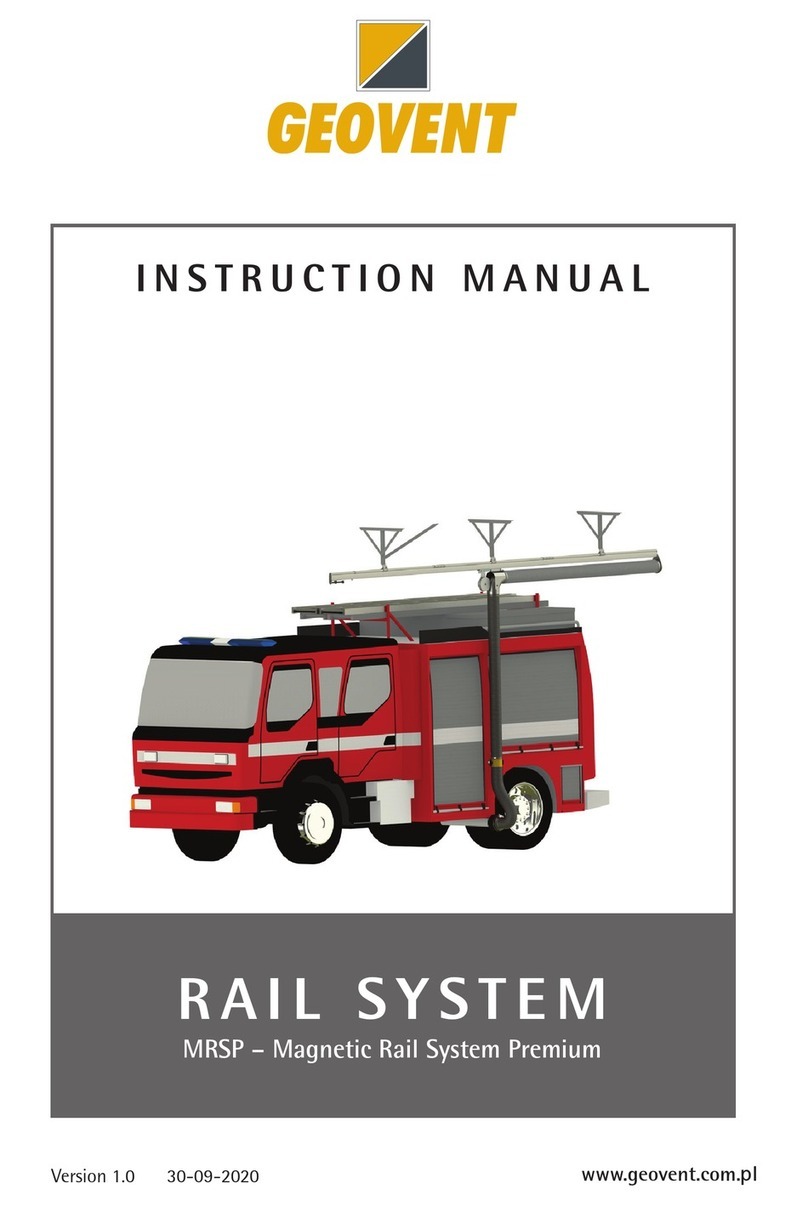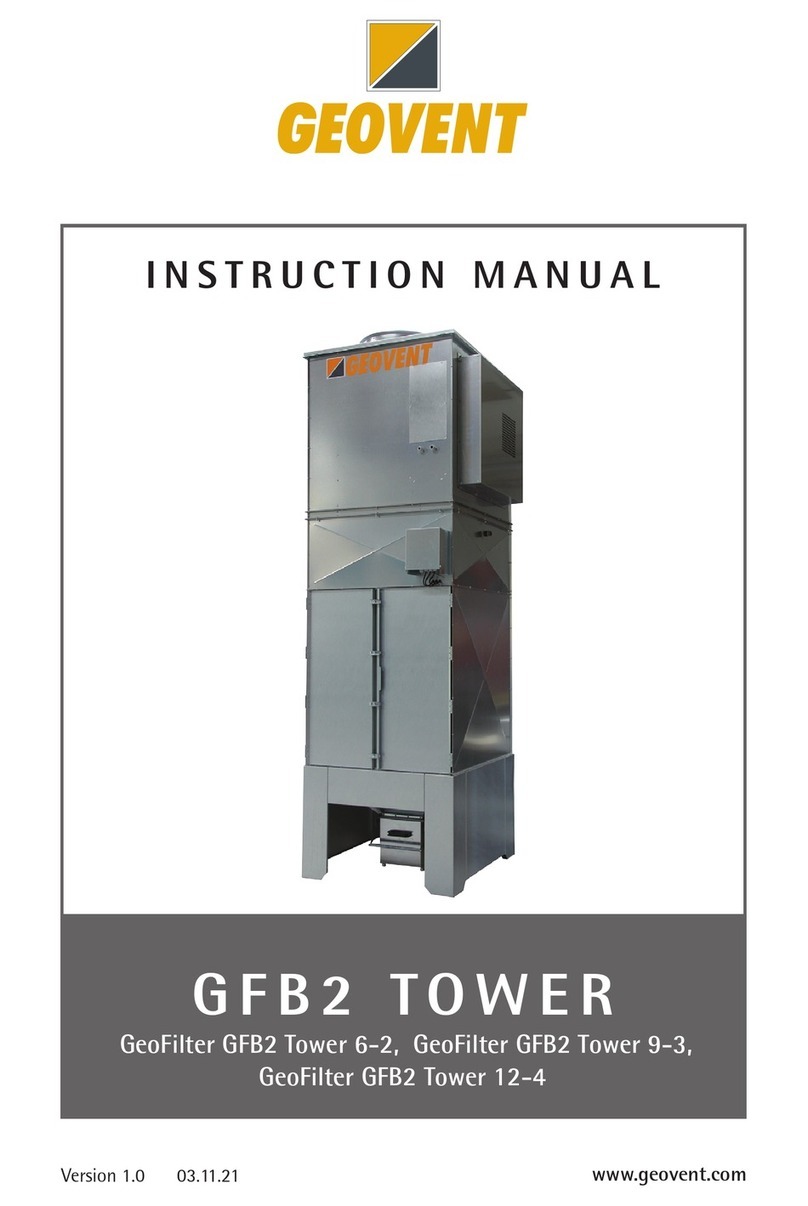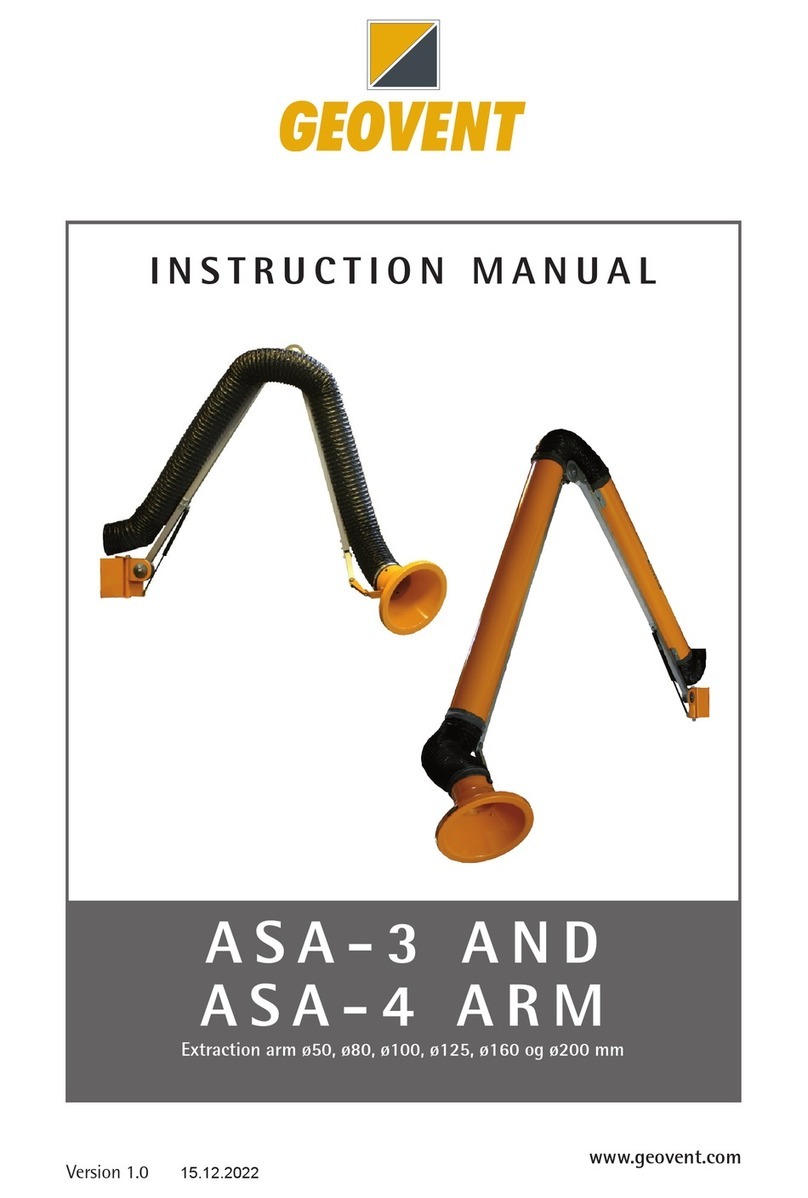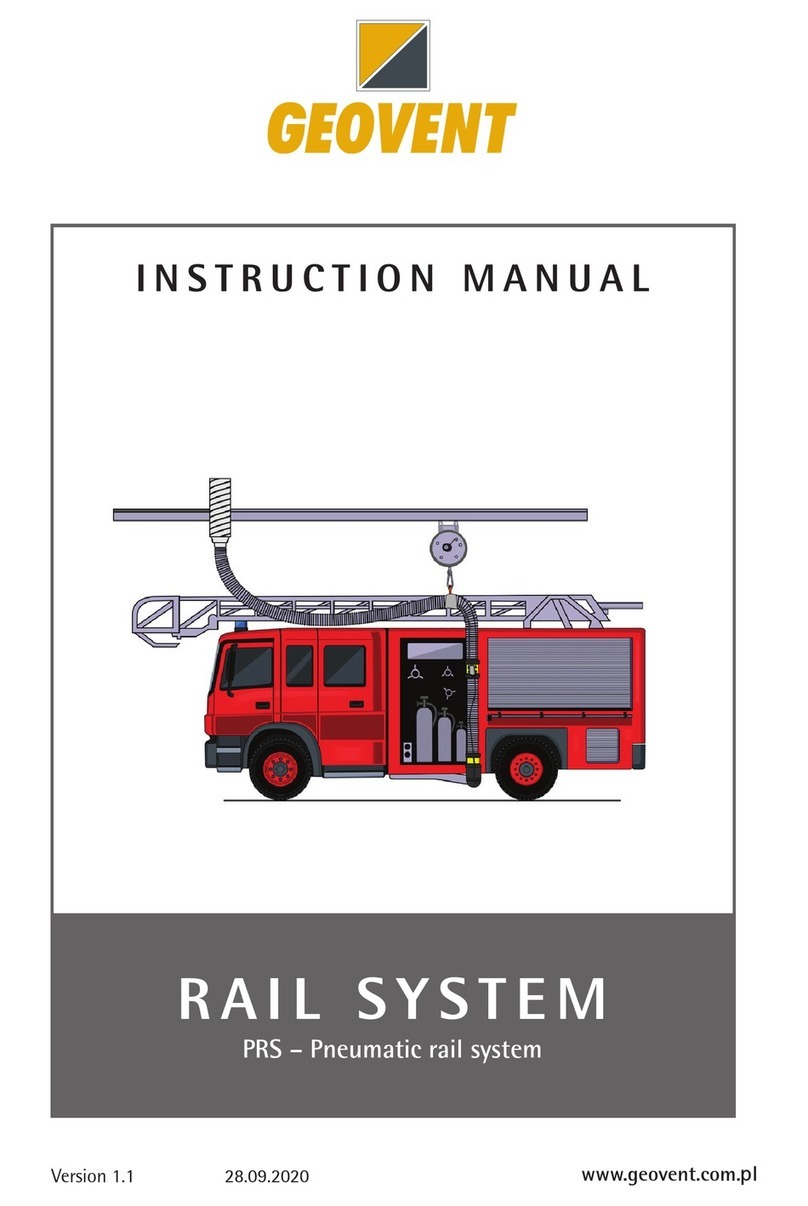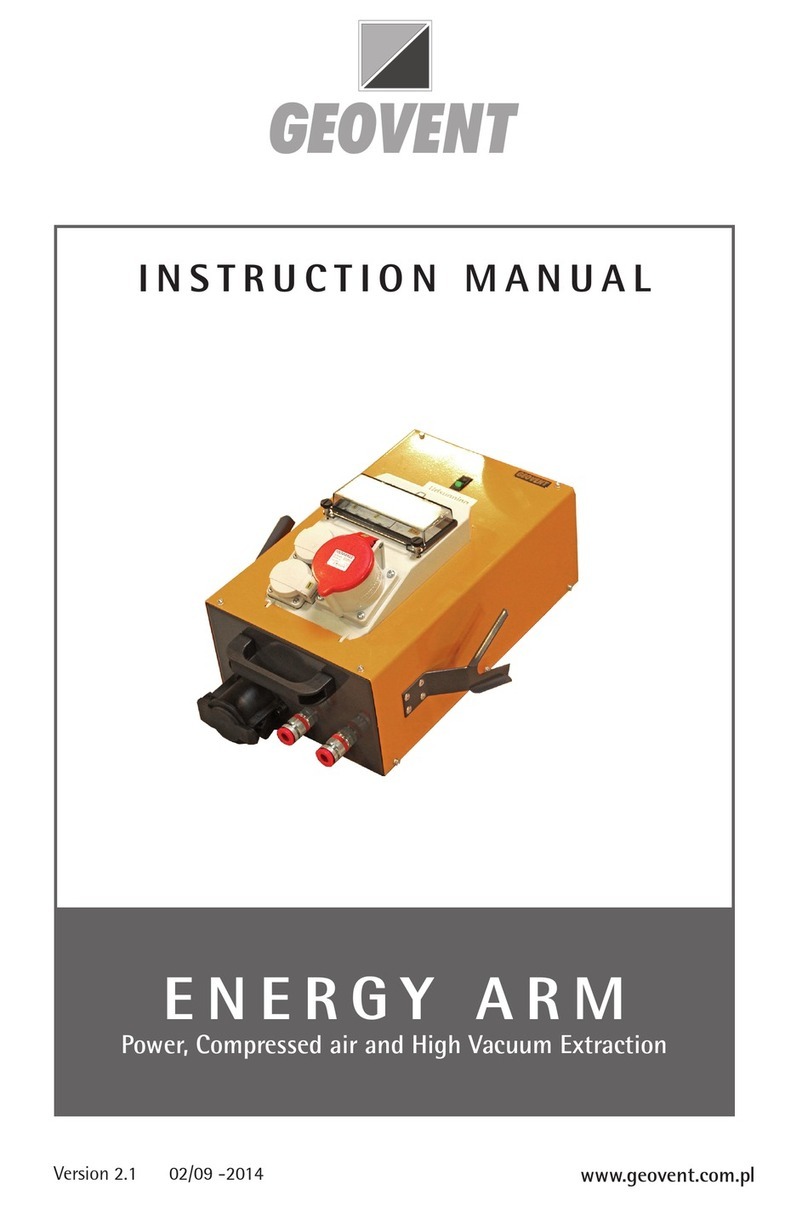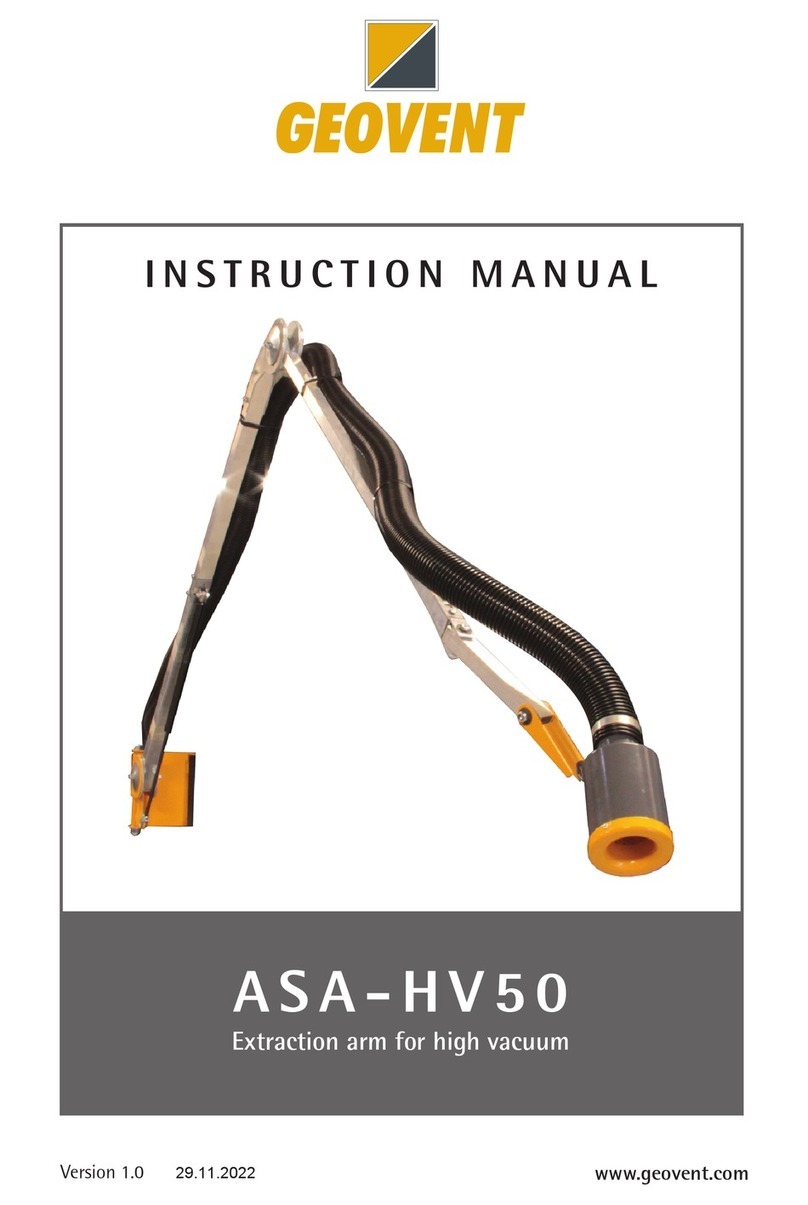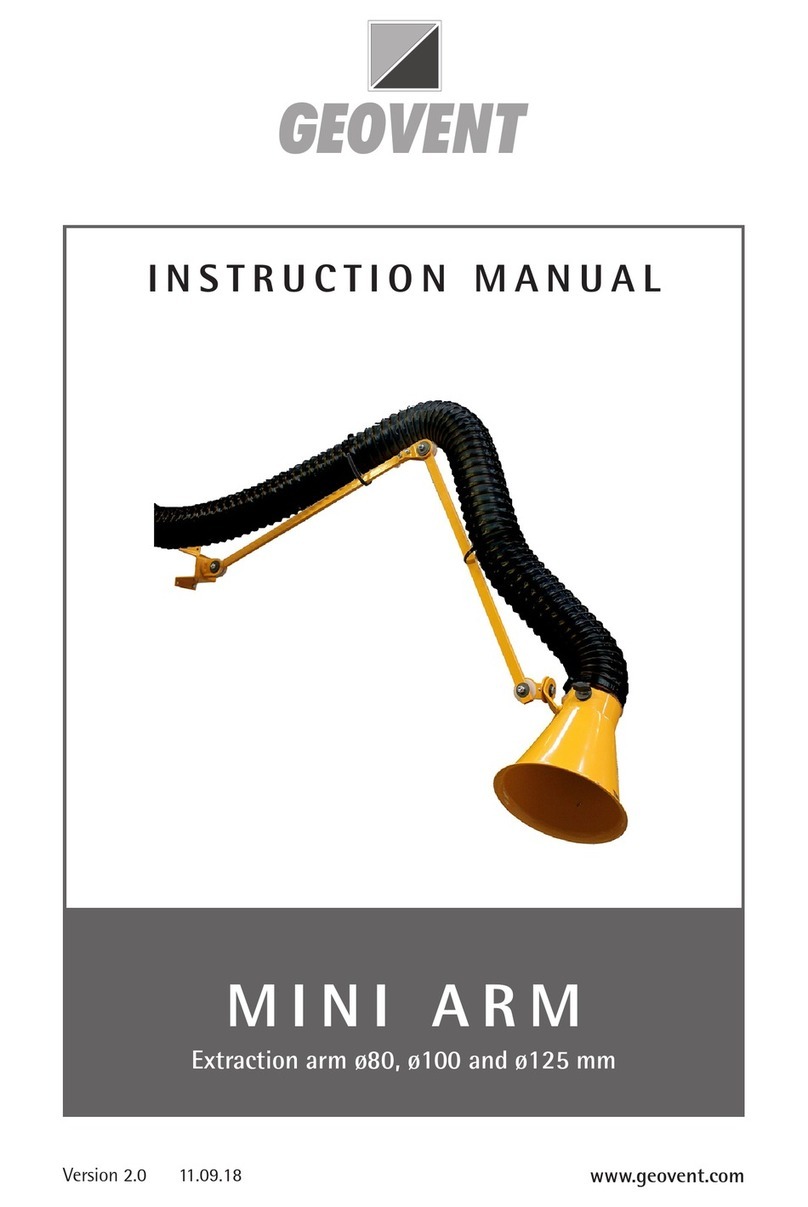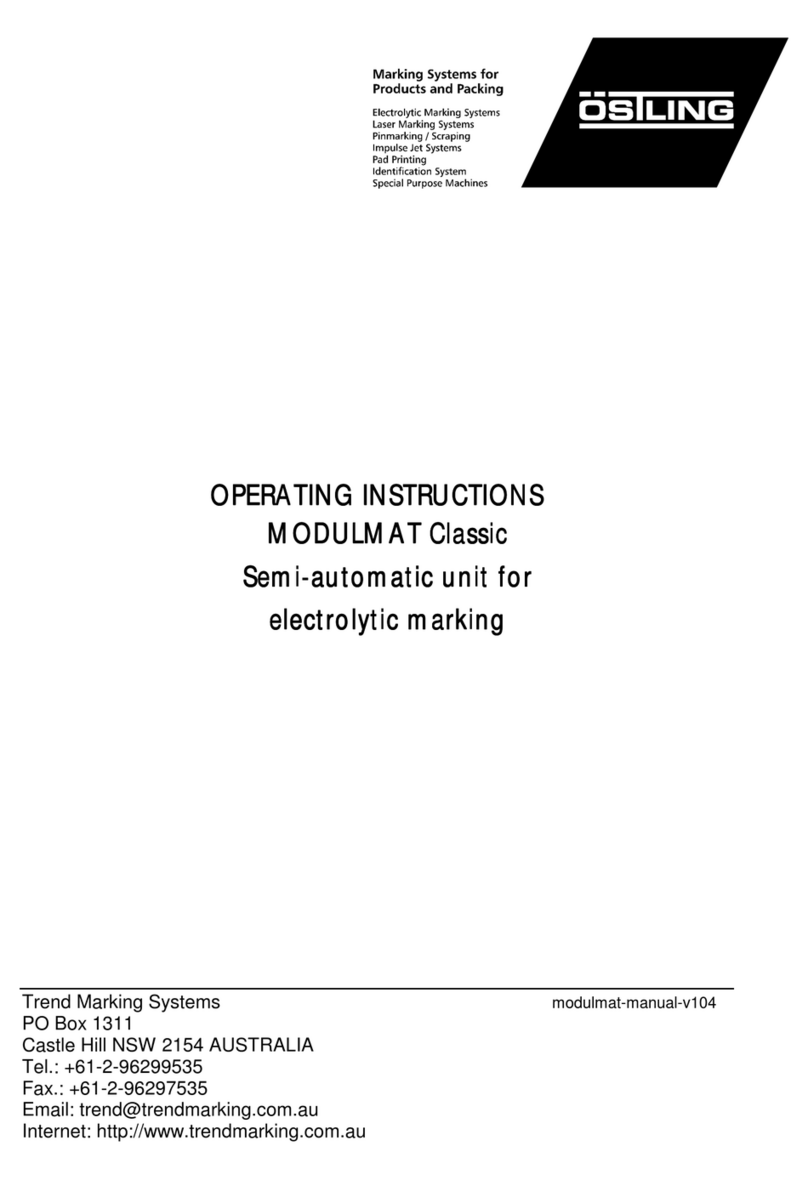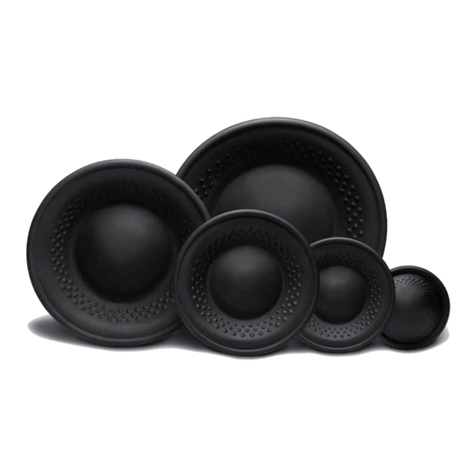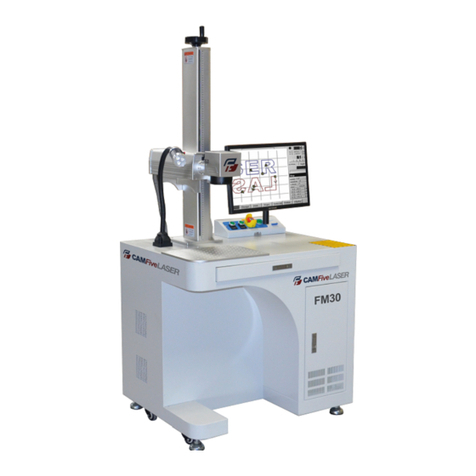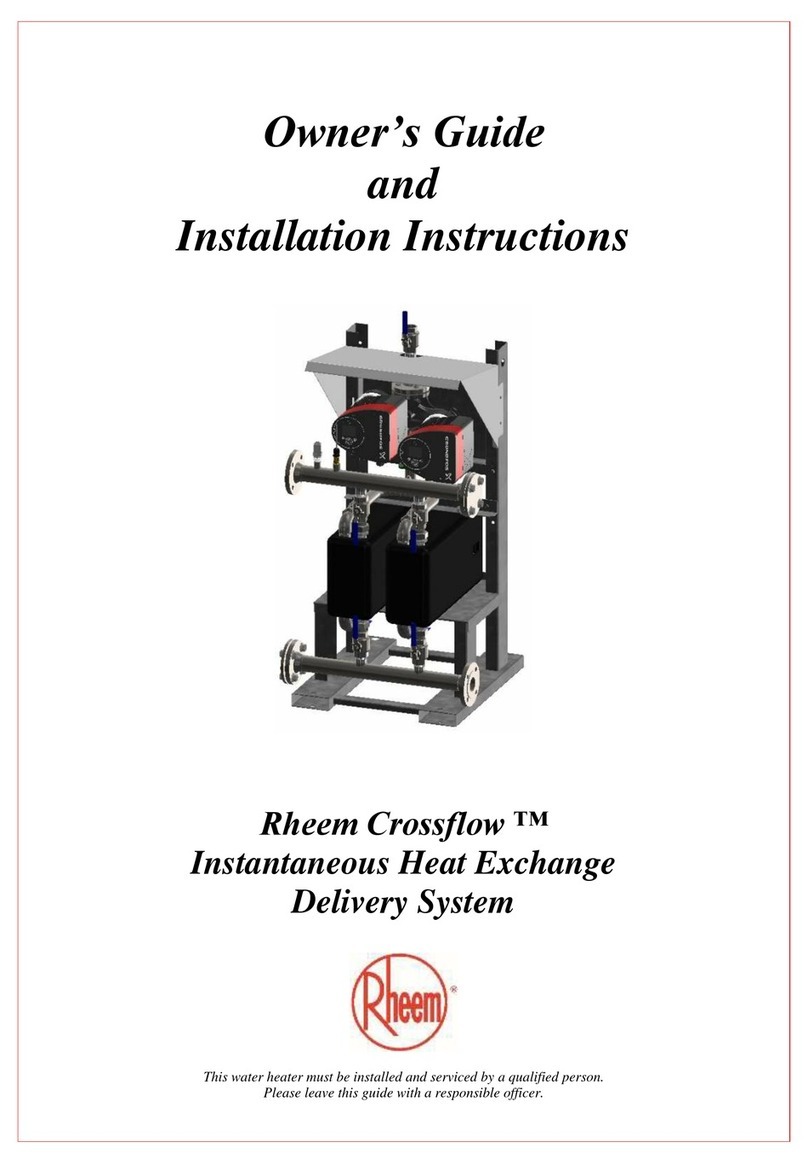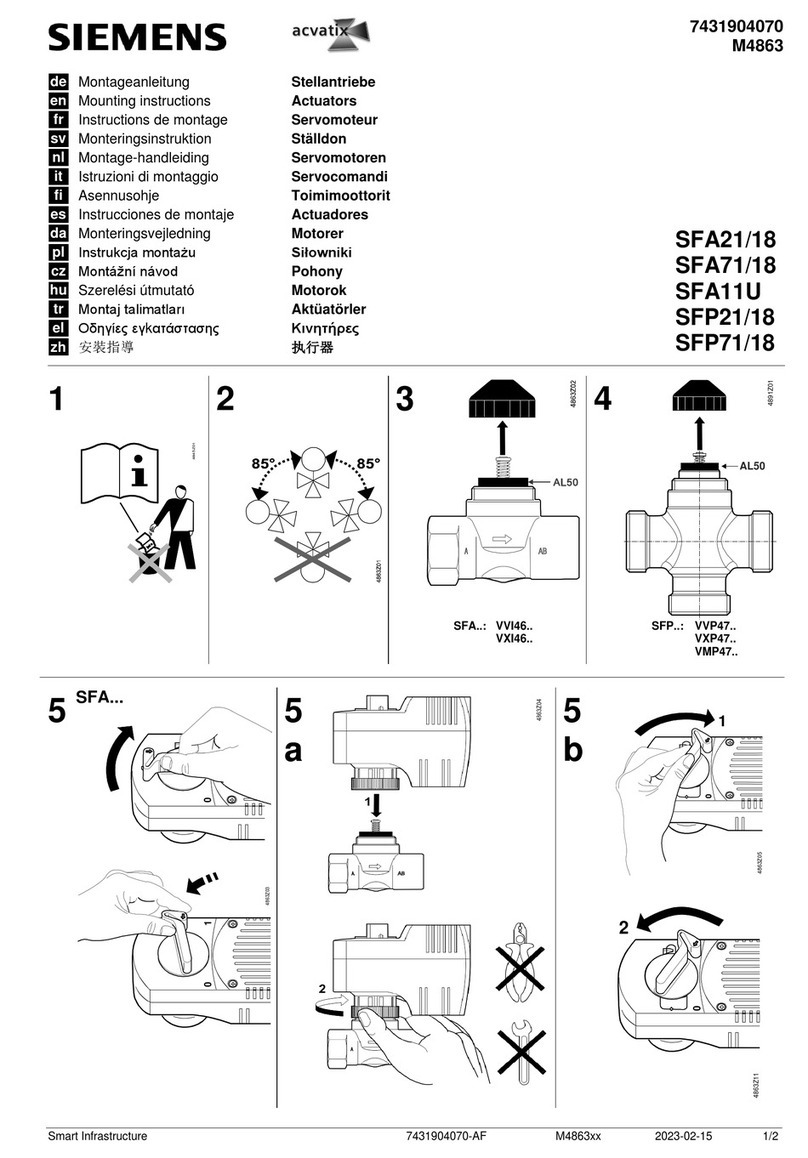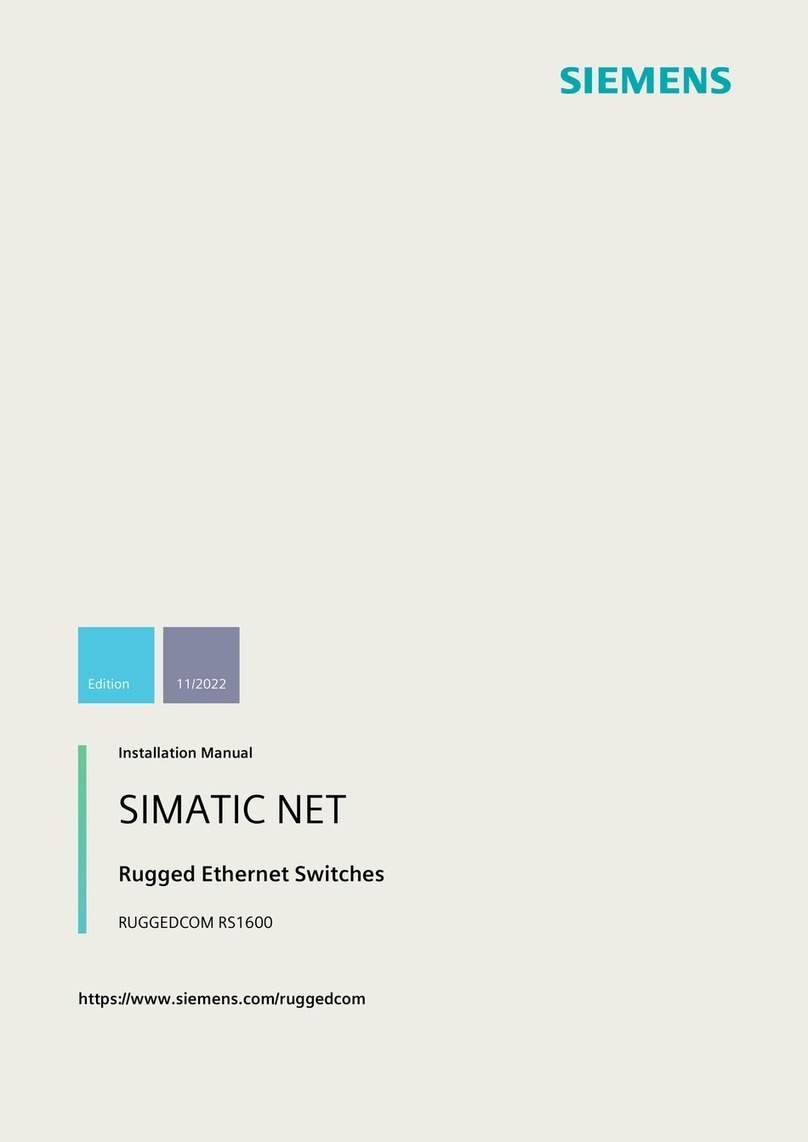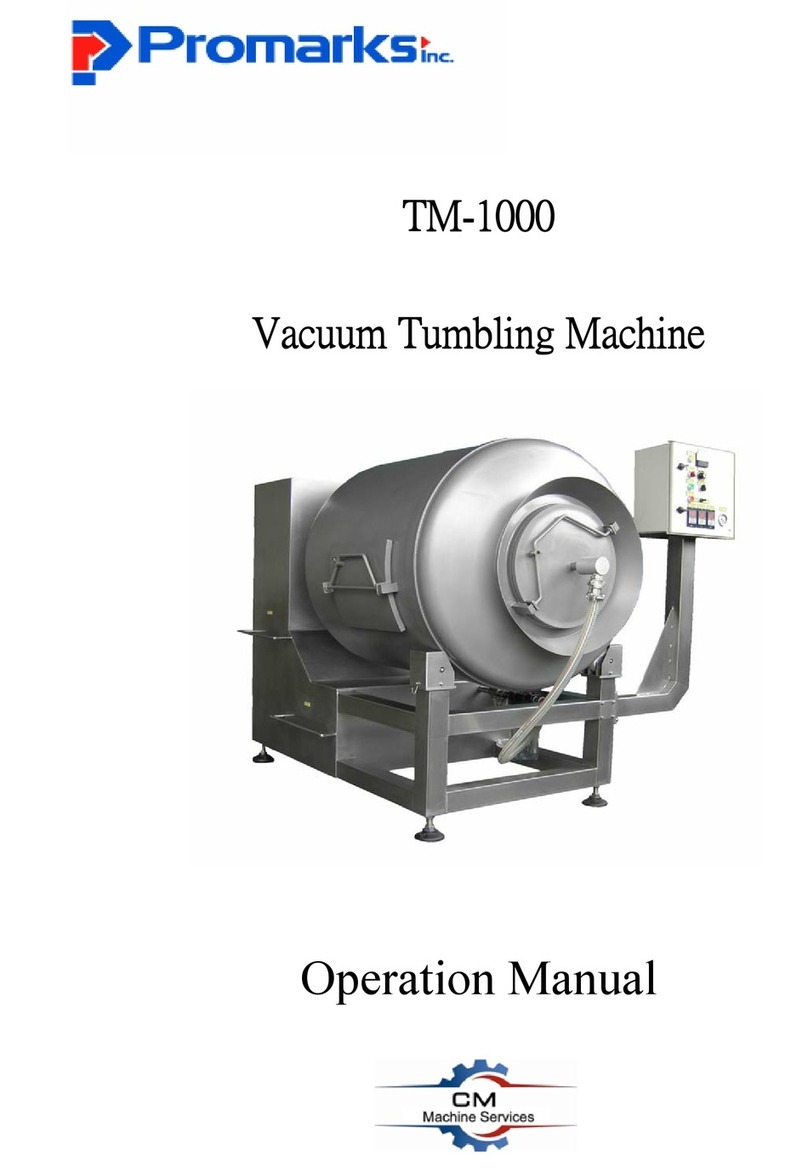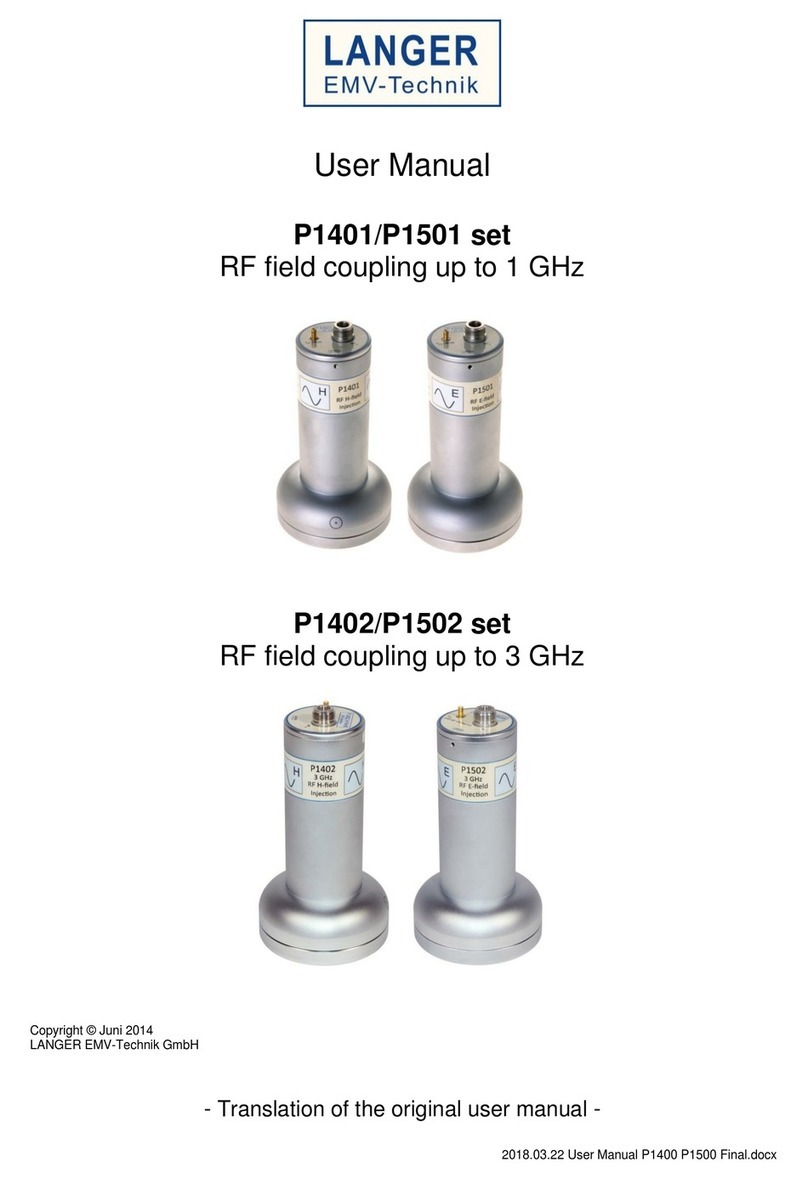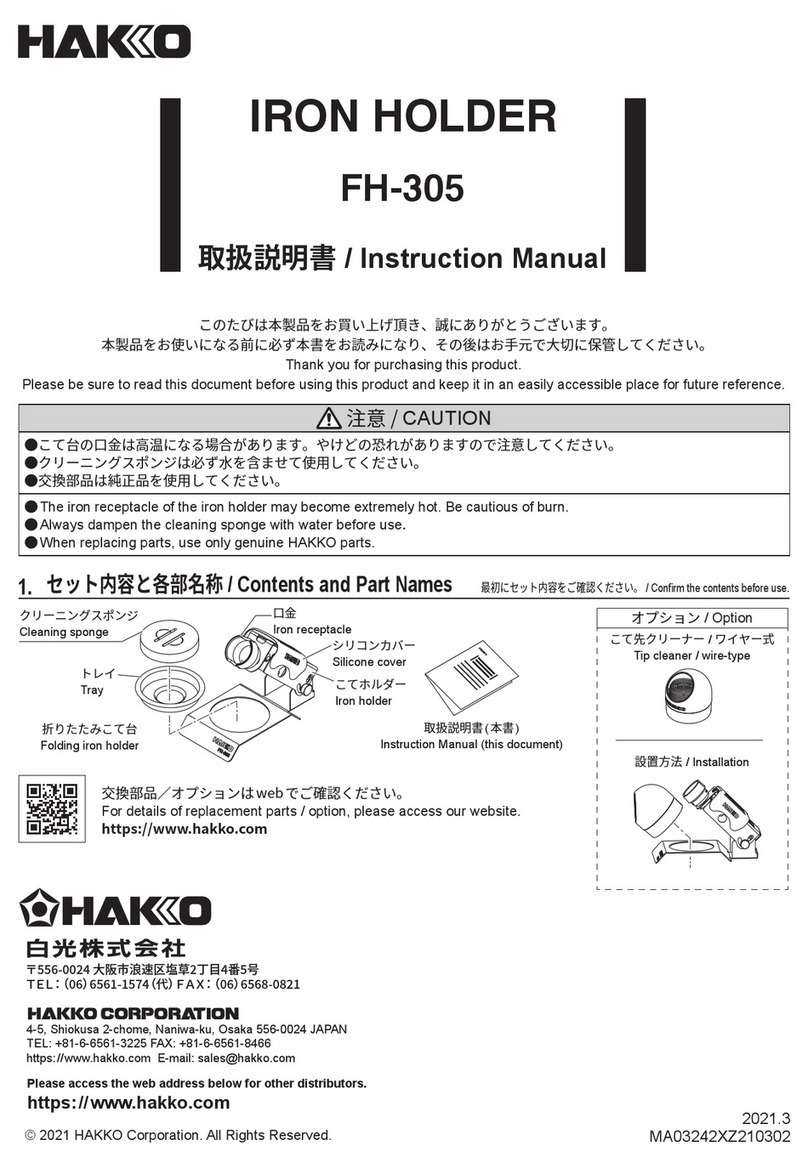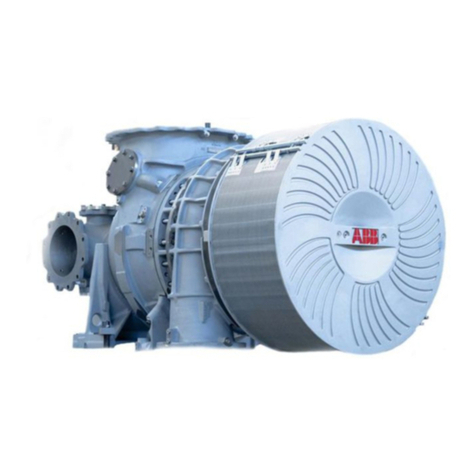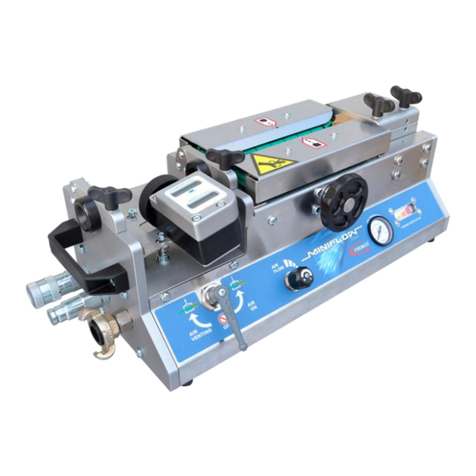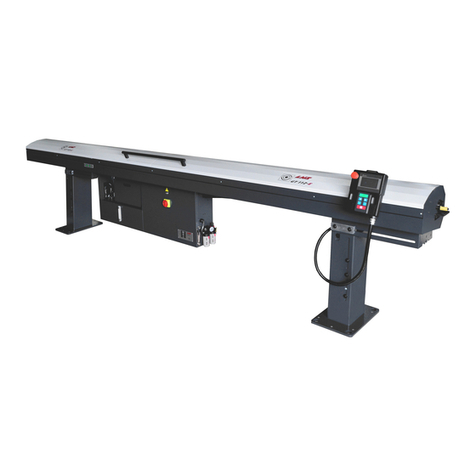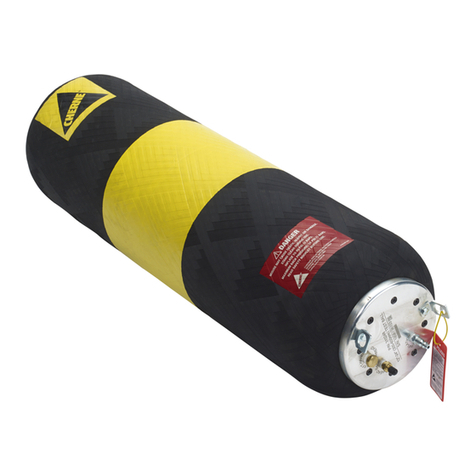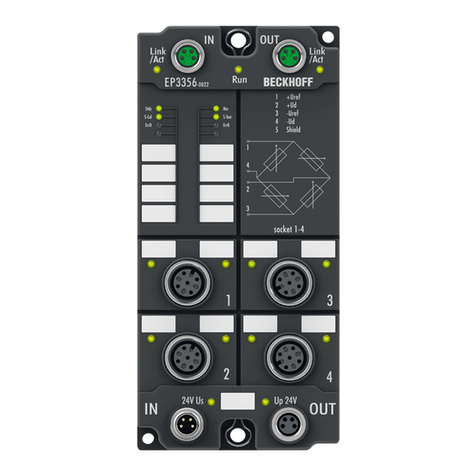
3
1.0 General safety precautions
IMPORTANT – Please study all the instructions before
mounting and commissioning.
Please keep these instructions in a safe place and
instruct all users in the function and operation of the
product.
All electrical installations must be carried out by an
authorised electrician.
Factory mounted parts must not be dismounted.
In order to secure correct suspension, in several places
two persons are required during the installation.
1.1 Danger
Letting go of the hose/nozzle when demounting it from
the exhaust pipe involves a risk of mutilation. Avoid
being hit by the nozzle – and be careful not to hit so-
meone else with it.
Hoses mounted on a trolley with spring balance F/LR:
Do not let go of the hose, when it is completely pulled
out, but keep a tight hold of the hose until it has been
totally coiled up again. If the hose slips, it will coil up
quickly, endangering people and machinery.
1.2 Field of application
The GEOVENT Channel Duct System is a rail system,
developed for the extraction of exhaust fumes and wel-
ding smoke. When one or several trolleys have been
correctly installed in the Channel Duct, the trolley may
be moved linearly to the area, where it is requested.
The hose is pulled down and the nozzle is fixed to the
exhaust pipe.
It is also possible to mount the hose trolley with a hose
reel (type LX or FB).
Alternatively, the Trolley may be mounted with a point
extraction arm instead (type WING or COMPACT). The
arm can rotate 360° and is suitable for the removal of
welding smoke, etc.
The Channel Duct can only be installed in such a way
that the rubber lips point either directly up or down.
The Channel Duct may not be used in areas classified
as ATEX zones, for example extraction of aluminum,
flour, textiles and wood dust and other media (eg. vapor
/ gas) which is associated with danger of explosion.
1.3 Technical data
Temperature exhaust air Max 150°C
Temperature surroundings 0 - 50°C
In special situations, where the temperature of the
exhaust air is higher than 150°C, the standard hose
may melt. In order to avoid such thing, various precauti-
ons may be taken: Please refer to the section regarding
troubleshooting, item 4.1.
Noise data
The actual Channel Duct System does not emit any
noise. The noise level depends on several factors,
primarily the relation between the diameter of the hose
and the extracted volume of air. If the hose has been
under dimensioned in relation to the required volumes
of air, wind roar may occur.
Optimum volume of air
Several factors are of importance when selecting the
optimum Channel Duct solution. Depending on the ap-
plication, the table below may be used as a guideline
for the volume of air, which is requested for the various
requirements.
Type of vehicle Recomm.
airvolume Recomm.
hose dia.
Small cars 300 m³/h ø80/ø100
Smaller private cars 400 m³/h ø100
Private cars > 3000 ccm 600 m³/h ø125
Vans/smaller trucks 800 m³/h ø125
Trucks 1000 m³/h ø150
Contractors machinery 1000 m³/h ø150
Test stand 1-2.000m³/h ø150/ø200
Contents
1.0 General safety precautions . . . . . . . . . . . . . . . . . .3
1.1 Danger . . . . . . . . . . . . . . . . . . . . . . . . . . . . . . . . .3
1.2 Field of application . . . . . . . . . . . . . . . . . . . . . . . .3
1.3 Technical data . . . . . . . . . . . . . . . . . . . . . . . . . . . .3
1.4 Construction . . . . . . . . . . . . . . . . . . . . . . . . . . . . .5
2.0 Installation . . . . . . . . . . . . . . . . . . . . . . . . . . . . . . .6
2.1 Optional equipment . . . . . . . . . . . . . . . . . . . . . . . .8
2.2 Trial run – exact adjustment . . . . . . . . . . . . . . . . . 9
2.3 Adjustment of the Trolley . . . . . . . . . . . . . . . . . . . .9
3.0 User instruction - application . . . . . . . . . . . . . . . . 10
4.0 Maintenance . . . . . . . . . . . . . . . . . . . . . . . . . . . .10
4.1 Troubleshooting . . . . . . . . . . . . . . . . . . . . . . . . . .10
5.0 Liability . . . . . . . . . . . . . . . . . . . . . . . . . . . . . . . . . 11
6.0 Declaration of Conformity according to Bilag IIA 12












